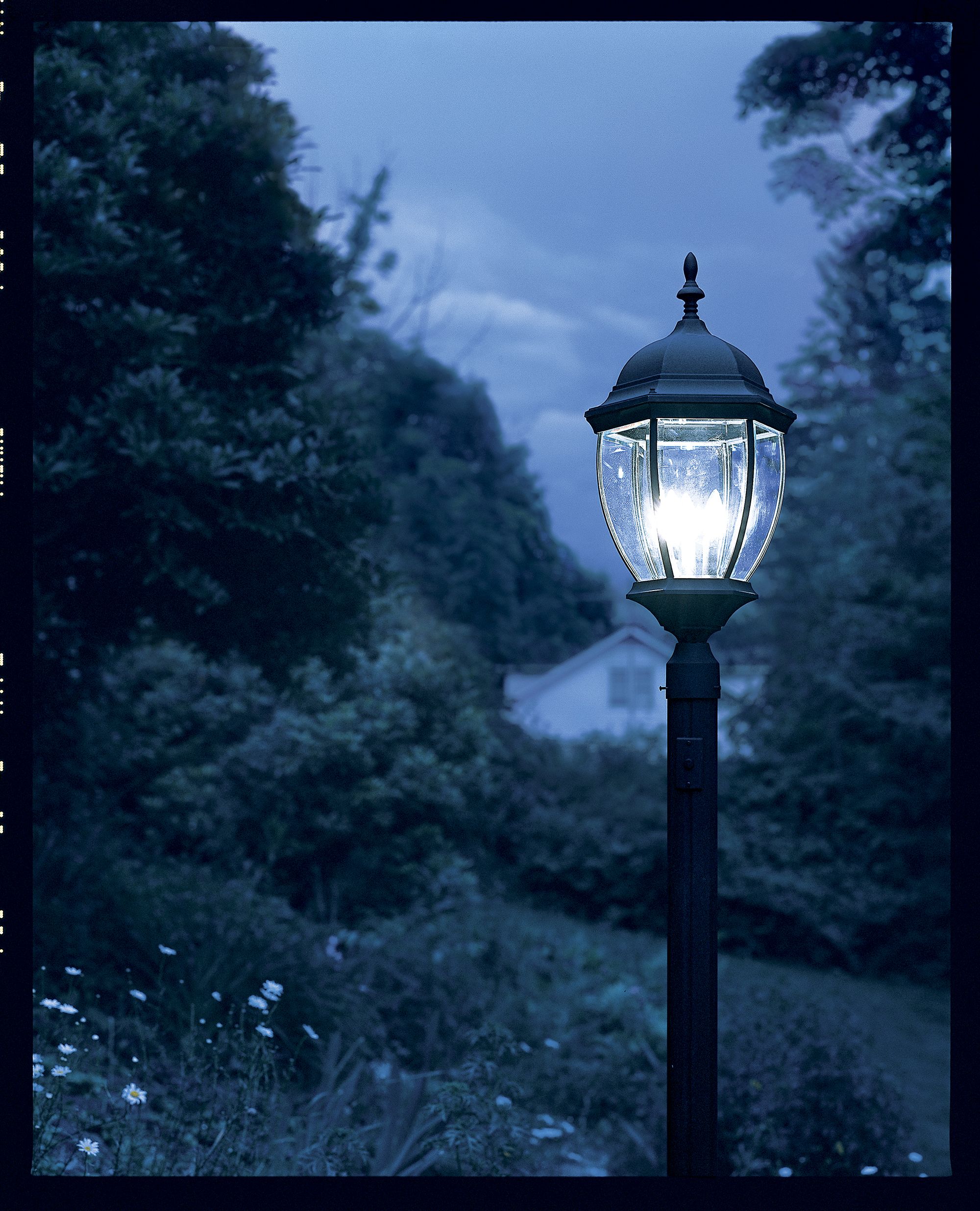Project details
Skill
Cost
Estimated Time
Installing a lamppost can significantly enhance your home’s curb appeal while providing lighting for safety and navigation. This DIY guide walks you through the process of installing a lamppost from start to finish With some basic tools and a bit of effort, you can illuminate your property and create a welcoming atmosphere for guests and family members alike.
What You’ll Need to Install a Lamppost
A typical lamppost installation consists of several key components. Here’s what you’ll need:
- Concrete footing: Provides stability for the post
- Conduit: Protects the wiring underground
- Electrical wiring: Connects the lamppost to your home’s electrical system
- The lantern: The light fixture at the top of the post
- The post: Usually made of metal, wood, or composite materials
Planning Your Lamppost Installation
Consider the following factors before beginning your project.
Choosing the Right Location
Select a location that maximizes visibility and complements your landscape design. Check that the chosen spot is away from underground utilities and provides adequate lighting coverage. Consider factors such as proximity to walkways, driveways, and your home’s electrical panel.
Tools and Materials
To install a lamppost, you’ll need the following tools and materials:
- 2-foot level
- 12-gauge UF-rated wire
- Concrete float
- Concrete mix
- Gravel
- Hacksaw
- Lamppost kit
- Masonry hoe
- Posthole digger or round shovel
- PVC conduit and fittings
- Wheelbarrow
- Wire stripper
- Trenching shovel
 Post hole digger
Post hole digger Screwdriver
Screwdriver Trenching shovel
Trenching shovel Wire stripper
Wire stripper Masonry hoe
Masonry hoe level – 2-foot
level – 2-foot Hacksaw
Hacksaw Shovel
Shovel Mason line and stakes
Mason line and stakes Wheelbarrow
Wheelbarrow Concrete float
Concrete float
Checking for Permits
Before starting, check with local authorities regarding the need for a permit. Some regions require homeowners to obtain a permit before installing any outdoor lighting. Getting the necessary permits makes sure you comply with local building codes and regulations. Failing to secure the required permits can lead to fines or being forced to remove the lamppost.
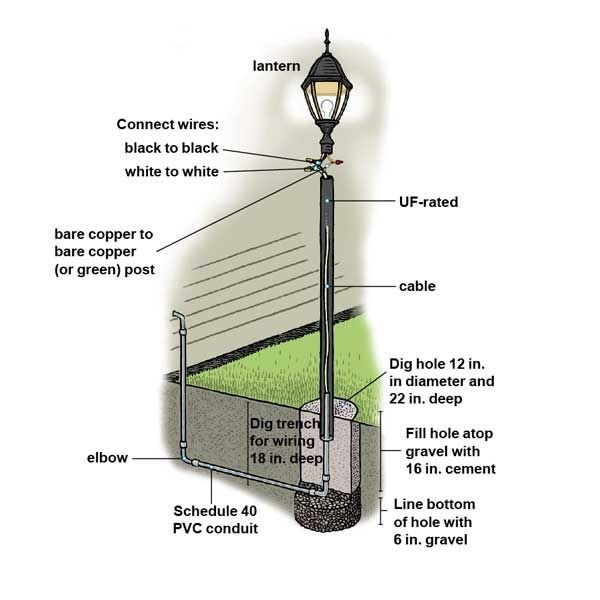
Preparing the Site for Lamppost Installation
Proper site preparation gives you a stable and long-lasting lamppost.
- Digging the Posthole: Begin by digging a posthole at your chosen location. The hole should be approximately 12 inches in diameter and 22 inches deep. This depth allows for a 6-inch gravel base and 16 inches of concrete footing. Use a posthole digger or round shovel for this task.
- Creating the Trench for Wiring: Next, dig a narrow trench from your home’s electrical panel to the posthole. The trench should be about 18 inches deep to protect the wiring from damage. Use a trenching spade for this task, and place the soil on a plastic tarp to make backfilling easier later.
- Adding Gravel Base: After digging the posthole and trench, add a 6-inch layer of gravel to the bottom of the posthole. This gravel base provides proper drainage and prevents the post from shifting in the concrete. Use a hoe or tamper to compact the gravel layer, making it stable for the concrete pour.
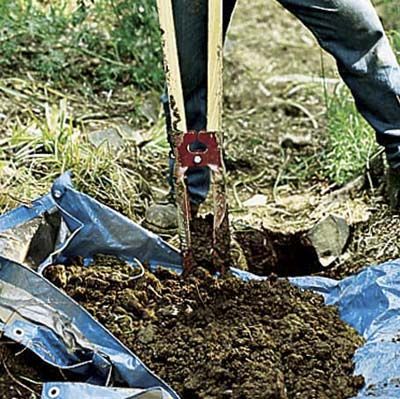
Installing the Electrical Components for a Lamppost
Proper electrical installation brings safety and functionality to your lamppost.
Running the Conduit
Dry fit PVC conduit pieces to reach from your house to the posthole. Cut the conduit as needed using a hacksaw. Use elbows to direct the conduit away from the house, down into the trench, and up at the post location. Make sure the conduit at the post protrudes six inches above ground level.
Threading the Wiring
Once the conduit is in place, thread 12-gauge UF-rated wire through it. Leave about 9 feet of extra wire at the post location and enough at the house end to reach your breaker box. After threading the wire, connect the conduit pieces using PVC cement, checking that all elbows are correctly oriented.
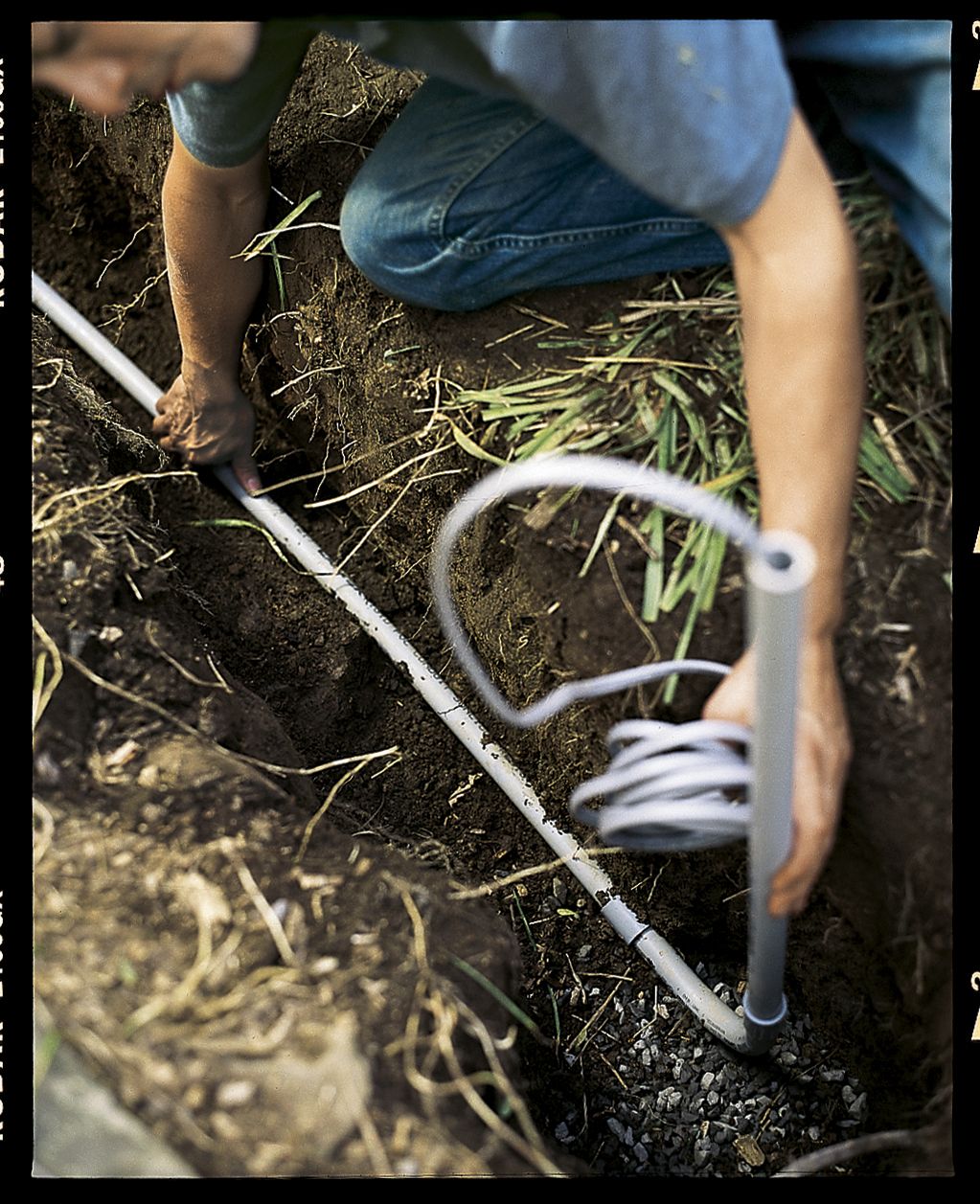
Setting the Lamppost Foundation
A solid foundation keeps your lamppost straight and stable.
Mixing and Pouring the Concrete
Mix concrete in a wheelbarrow or trough, keeping the mixture stiff to support the post and reduce setting time. Fill the posthole with concrete, being careful not to get any in the conduit or on the wires. Leave about 6 inches of conduit exposed above the concrete.

Positioning the Post in Wet Concrete
Carefully lay the post next to the hole and pull the wires through from bottom to top. Slide the post over the conduit and 12 inches into the wet concrete. Twist the post as you insert it to work it into the concrete evenly. Use a level to make the post plumb, adjusting as necessary.
Securing the Post
After positioning the post in the wet concrete, secure it by bracing it with wooden stakes or clamps. These braces will hold the post in place while the concrete sets, so you want to check that it stays upright and doesn’t shift. Concrete usually takes 24 to 48 hours to cure fully, so keep the braces in place until it is set.
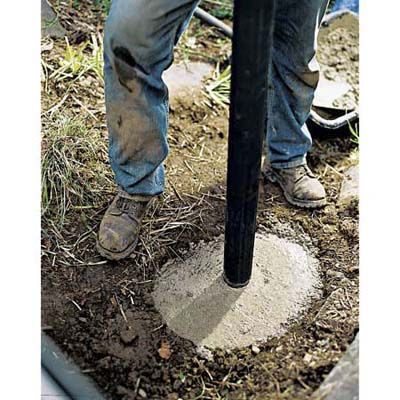
Assembling and Mounting the Lamppost
With the foundation set, it’s time to complete the lamppost assembly.
Attaching the Lantern to the Post
Once the concrete has hardened, you can attach the lantern to the post. Follow the manufacturer’s instructions for your specific lamppost model. Generally, this involves connecting the wires and securing the lantern with screws or bolts.
Making Sure the Post is Plumb
Double-check that the post remains plumb after attaching the lantern. If needed, you can make minor adjustments by carefully shifting the post in the concrete before it fully sets. Use a level to verify the post’s alignment from multiple angles.
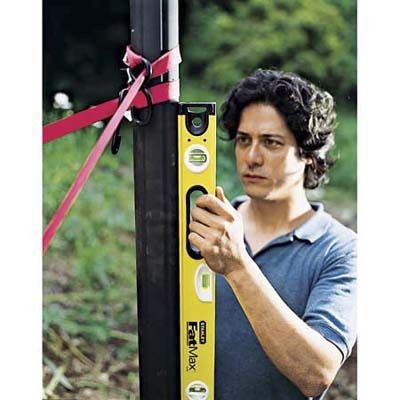
Sealing the Gaps
After attaching the lantern and confirming the post is plumb, apply a waterproof sealant around the base of the post where it meets the concrete. This sealing prevents water from seeping into the concrete and causing damage over time. It also helps to keep the post secure and stable.
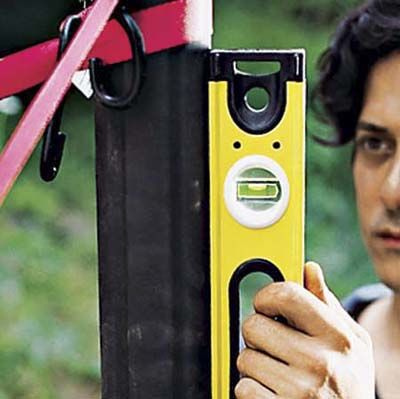
Making Electrical Connections for Your Lamppost
Proper electrical connections are crucial for the safety and functionality of your lamppost.
Wiring the Lamppost
Carefully strip about three inches of insulation from the UF cable at the top of the post, revealing the white, black, and ground wires. Match these wires to the corresponding wires on the lantern. Use wire nuts to connect each pair of cables securely.
Connecting to the Main Electrical Panel
For safety reasons, have a licensed electrician connect the lamppost wiring to your home’s main electrical panel and install a switch. This means you comply with local electrical codes and reduces the risk of electrical hazards.
Installing a Timer or Photocell
Consider adding a timer or photocell to your lamppost setup. These devices automatically turn the lamppost on and off based on the time of day or ambient light levels. A timer is set to specific times, whereas a photocell detects lighting conditions and adjusts the lamp accordingly. Both of these additions will increase the efficiency of your new lighting fixture.
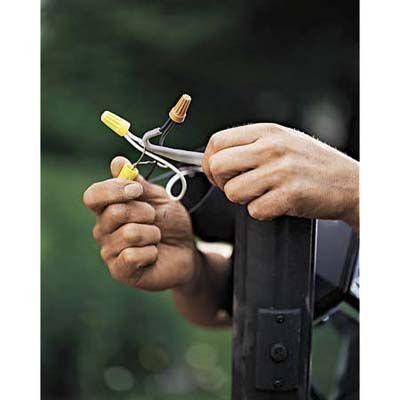
Lamppost Finishing Touches and Safety Considerations
Complete your lamppost installation with these final steps for safety and style.
Backfilling and Landscaping
Once the concrete has fully set and electrical connections are complete, backfill the trench and around the post base with soil. Tamp down the soil to prevent settling. To enhance the lamppost’s appearance, consider adding decorative elements like mulch or small plants around the base.
Testing the Lamppost
Before considering the job complete, test your new lamppost to make sure it functions correctly. Turn on the switch and verify that the light comes on and stays lit. If you encounter any issues, consult with an electrician before using the lamppost.
Adding House Numbers or Decorative Elements
Enhance your lamppost’s functionality and style by adding house numbers, planters, or hanging baskets. House numbers make it easier for visitors and emergency services to find your home. Planters or hanging baskets add a touch of color and life to your yard, making the lamppost a focal point.
Lamppost Installation Cost
Understanding the costs involved can help you budget effectively for your lamppost project.
DIY vs. Professional Installation Costs
DIY installation can save you money on labor costs, but you’ll need to factor in the cost of materials and tools. A basic lamppost kit can range from $471–$1,050, depending on style and material.* Professional installation typically costs an additional $78–$217 per fixture for materials and labor.
Factors Affecting Overall Expenses
Several factors can influence the total cost of your lamppost installation:
- Type and quality of the lamppost
- Length of wiring needed
- Complexity of the installation site
- Local permit requirements
- Additional landscaping or decorative elements
*Cost information based on 2024 reports from Angi and HomeWyse.
Maintenance Tips for Your New Lamppost
Proper maintenance helps your lamppost continue to function well and look great in the long term.
- Regular Cleaning and Inspection: Clean your lamppost periodically to remove dirt, debris, and cobwebs. Inspect the post and lantern for signs of damage or wear, such as rust or loose connections. Address any issues promptly to prevent more significant problems.
- Seasonal Care: In regions with harsh winter weather, consider adding seasonal maintenance to your schedule. Remove any snow or ice buildup around the post to prevent damage. Check for any cracks or wear that could lead to issues as it cycles through freezing and thawing temperatures. Regular attention will prolong the life and appearance of your lamppost.
- Troubleshooting Common Issues: If your lamppost stops working, check the bulb first. If replacing the bulb doesn’t solve the issue, verify that the switch is working and check for tripped circuit breakers. For more complex electrical problems, consult a professional electrician.
Our Conclusion
Installing a lamppost is a rewarding DIY project that can significantly enhance your home’s exterior appeal and functionality. By following this guide and taking necessary safety precautions, you can successfully install a lamppost that will provide illumination and ambiance for years to come. Remember that while many aspects of lamppost installation are DIY-friendly, electrical work should be left to licensed professionals to meet safety and code compliance.
